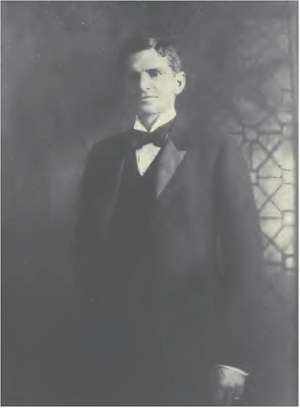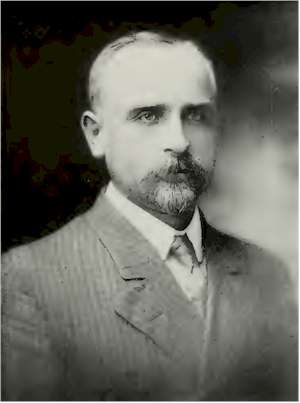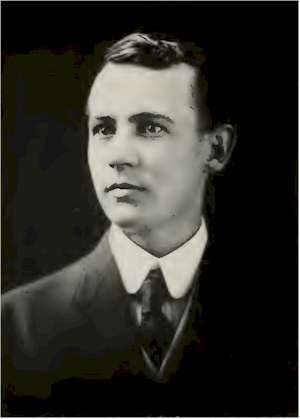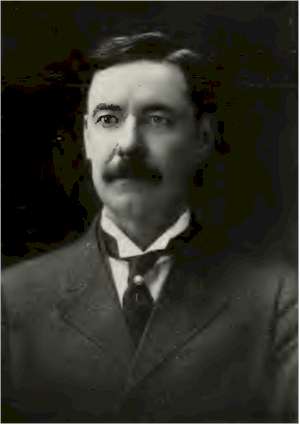Utah Biographies ~ Snyder to Tarbet

Snyder, Willard F.
Willard F. Snyder is a native son of
Utah, having been born at Woods Cross, Davis County, about ten
miles north of Salt Lake City, September 22, 1863.
His father was George G. Snyder who was born in Watertown,
Jefferson County, New York, in 1819, and his mother Martha
Snyder. George G. Snyder's boyhood was spent on a farm, and
during the first few years of his manhood he was engaged in the
potash industry in New York and Canada. In 1844 he came west,
settling in Jefferson County, Missouri. When the California gold
excitement stampeded the country in 1849, the father of our
subject joined the overland west-bound tide. He went by the way
of Salt Lake City and spent the winter in Salt Lake valley. He
reached Sacramento in the fall of 1850, and soon after that went
to Diamond Springs, where he built a hotel and conducted it
successfully for four years. Having amassed considerable wealth
in the gold fields of California, he set out to return to the
East, but on the way stopped again in Salt Lake City. He had
previously joined the Mormon Church, and having many friends in
the valley, concluded to remain here. He engaged in business in
Salt Lake and Davis counties for several years, later going to
Cache County, where he built a sawmill and operated it with
success. In 1864 he moved to Summit County, where he engaged in
ranching and the stock business, and in freighting, livery,
merchandising and mining. He was one of the earliest settlers in
Park City, and laid out a portion of the town. He served as
probate judge of Summit County for six years, and remained a
resident of Park City until his death, in 1887. His wife died in
March, 1891. The Snyder family came originally from Germany.
They settled first in Pennsylvania, being among the earliest
settlers of that State. George G. Snyder's father was Isaac
Snyder, and his mother Louisa Comstock Snyder. The Comstocks
were of English descent, the first American member of the family
having come over in the "Mayflower."
Our subject spent his boyhood in Summit County and his education
was obtained mainly in the public schools of Park City. Growing
up in a mining atmosphere such as that pervading so prosperous a
mining center as Park City has always been, he became half
-unconsciously well versed in mining matters, and consequently
well fitted in early man-hood to engage in the mining business
intelligently and successfully. He has been actively engaged in
this work for twenty years, and has achieved an enviable
position in the Salt Lake and Utah mining field. He is president
and a director of the National Development Company, with offices
on the fourth floor of the new Judge Building, Salt Lake City,
and holds similar positions in the official family of the
Yerington Malachite Copper Company, whose mines are at
Yerington, Nevada. He is vice-president and a director of the
famous Cliff Mining Company, with mines at Ophir, Utah, and is
interested as a stockholder and officially in many other mining
concerns in the inter-mountain country. Mr. Snyder is a
prominent figure in the large and growing group of energetic and
successful mining men who have been and are now doing so much to
make Salt Lake the mining center of the country.
Mr. Snyder is a member of the Salt Lake lodge of Elks, the Alta
Club, the Commercial Club, and the Country Club. He is married
and is the father of six children, the family residing in a
commodious and handsomely appointed new and modern home at 643
East Second South Street, Salt Lake City, Utah.

Stewart, Charles Biekley
Charles Biekley Stewart was born July
20, 1870, at Draper, Salt Lake Comity, Utah. He is the son of
Isaac M. and Elizabeth (White) Stewart. His father was a farmer,
who came to Utah with the early pioneers, and assisted
materially in building up the State, being especially noted as a
leader in the educational matters of the State, and took great
pride in educating his children. Mr. Stewart is a descendant of
Puritan stock, and his grandfather, Biekley Stewart, during the
whole period of the Revolutionary war, carried his musket in the
defense of his country.
The subject of this sketch spent his early days on the farm and
attended the district school during the winter months; he later
attended the State University, and was a public school teacher
for a number of years. In 1890 he entered the University of
Michigan and graduated from the law department of that
institution in June, 1893, and was admitted to the bar the same
year. Since that time he has been constantly engaged in the
practice of his profession, being a member of the well-known law
firm of Stewart & Stewart of Salt Lake City.
At the age of twenty-six years, Mr. Stewart was married to
Katherine Romney, daughter of George and Margaret Romney. Miss
Romney was known as an accomplished musician and attained
considerable prominence in musical circles throughout the State.
As a result of their union they have seven children, viz:
Charles, Margaret, Katherine, Elizabeth, Isaac, Josephine and
George. Mr. Stewart is a lover of home, and is a strong believer
in that oft-repeated maxim: "The home is the foundation of the
State and nation, and without purity of home life no nation can
long exist."
As a large sheep-owner, Mr. Stewart brought much credit to
himself in 1907 by bringing about a friendly relationship
between the sheep men and cattlemen of western Wyoming, a fact
that was highly beneficial to both interests. This agreement
promises to continue indefinitely, and it seems to have
permanently eliminated the friction formerly prevalent on these
ranges.
Mr. Stewart has always taken a deep interest in the political
and social life of the country, and has held several positions
of trust in his native State. He is not only a successful
practitioner at the bar, but he has attained considerable
prominence in waging the battles of commerce, and, although
comparatively a young man, he is actively and officially
connected with some of the most flourishing business enterprises
in the State of Utah, among them being the Stewart-Harding Sheep
Company, Salt Lake & Jordan Mill & Elevator Company, Western
Wyoming Land & Livestock Company, Utah Coal & Supply Company,
Salt Lake Real Estate & Title Company, Summit County Mercantile
Company, Stewart Ranch, and Crystal Lime & Cement Company. He is
also connected with the University Investment Company. Since its
organization, he has been secretary and director of the Wool
Growers' Association. Mr. Stewart's residence is at 217 Twelfth
East Street, Salt Lake City, Utah.

Sweet, Arthur Alonzo
Among the younger generation of business
men of Utah there is none more prominent and progressive than
the subject of this sketch, who has been very prominently
identified with the growth and develop-ment of the resources of
Utah for the past thirteen years, and who has achieved the
success and distinction in his endeavors that seldom come to a
man of his years.
Arthur A. Sweet was born at Ellsworth, Ellsworth County, Kansas,
January 10, 1881. He is a son of Alfred A. Sweet, retired
merchant of that city, and his mother was Mary Sweet. Mr. Sweet
received his early education in the schools of his native city
and at the Russell High School, at Russell, Kansas. At the age
of fifteen he came to Salt Lake City, and has been very
successful since his arrival. He was the promoter and organizer
of the Independent Coal and Coke Company, which concern is at
present shipping eight hundred tons of coal per day. He is also
general manager and a director of the Consolidated Fuel Company,
one of the largest in the West. This company is now shipping
three thousand tons of coal per day, and has opened up the
largest coal field in Utah. Mr. Sweet is also general manager of
the Southern Utah Railway, which is twenty-one and one-half
miles in length, running from Price, Utah, into Emery County,
Utah, opening up a large coal and farming community that will in
time yield great wealth to the people interested, and will be of
inestimable benefit to the citizens of Utah in the development
of the great mineral resources of the State. Mr. Sweet is also
prominently identified with numerous other companies of the
inter-mountain country.
Mr. Sweet was married August 31, 1900, to Miss Frances Mary
Wade, and two children have been born to them, namely: Marcella
and Harold Arthur Sweet. He has never held any political office,
being too busy with his numerous industrial enterprises to
bother with politics. Mr. Sweet is a member of Lincoln Lodge,
Knights of Pythias, also of the Commercial and Automobile clubs
of Salt Lake City, and the American Mining Congress, and he
resides at 853 First Avenue, Salt Lake City.
Mr. Sweet, though one of the youngest business men of Utah, has
shown executive ability and good business judgment in all of his
under-takings, and a prosperous and successful future is
predicted for him. There is much to develop in the
inter-mountain country and plenty of work for the younger
business men to do, and no doubt Mr. Sweet will yet be heard
from in larger undertakings than he has yet attempted.

Tarbet, Alexander H.
Alexander H.
Tarbet, one of Utah's most prominent mining operators, was born
July 21, 1861, at Iowa City, Iowa. He is a son of Alexander and
Delia Tarbet, who were of Scotch-Irish descent. Mr. Tarbet
received his education in the common schools of Iowa and Salt
Lake Collegiate Institute, and at the Colorado State School of
Mines at Golden. He came to Utah in 1875, and for three years
following he divided his time between his father's mines, The
South Star and Titus at Alta, and Salt Lake City. It will be
remembered that over this mine was waged the famous case of
Tarbet vs. Flagstaff, which was carried for final decision to
the Supreme Court of the United States, which established the
principle that under conditions the "end lines" become the "side
lines." The balance of the time he attended the Salt Lake
Collegiate Institute. While at the mine, young Tarbet, being of
a receptive age, was almost constantly in the mine with the
miners and helping the blacksmiths and timber men on the
outside, and what interested him most were the operations of
timbering up and protecting bad and caving ground, which
knowledge acquired was the real basis of his after success, and
when serious caving occurred in the Colusa Mine (then the
property of the Montana Copper Company, but now the chief asset
of the Boston and Montana), the superintendent acknowledging his
inability to stop same, C. T. Meader, the general manager, put
Mr. Tarbet in charge of the work of stopping the caving, the
continuance of which would mean the destruction of the shaft as
well as the falling in of the hoisting plant. Tarbet succeeded
after continuous work for thirty-six hours by filling in and
false setting, in safely securing the ground. Mr. Meader then
put Tarbet in control of all mining operations. Mr. Tarbet is
associated with many important mining companies in Utah and
Idaho and has been a great power in the development of Utah's
mineral resources. He is connected with the Idaho Consolidated
Power Company, of which he is a large stockholder; this company
lights Pocatello and other cities and towns of Idaho. He owns a
controlling interest in the Pittsburg Consolidated Mining
Company, and is interested in other important mines in Utah and
Idaho. When Mr. Tarbet was but twenty years of age he became
superintendent of the Bell Mine of Butte, Montana, which was
then and is today one of the biggest properties in the Butte
District. There he remained, for two years, when he became
superintendent of the Parrott Mines, where he remained for the
following year; in the meantime he developed the famous "Wake
up, Jim" Mine, a property worth a million dollars; but at this
critical period the Bell Mine failed, and as Mr. Tarbet had a
large amount of stock in it, he lost all he had, and, being
inexperienced in handling large finances, and not wishing to let
anyone know of his great find in the "Wake up, Jim" Mine, he
sacrificed his interests, and at the age of twenty-one found
himself $14,800 in debt, instead of being a millionaire, as he
thought he was. Nothing daunted, however, Mr. Tarbet began work
all over again and took contracts for hauling ore, and inside of
two years he had paid off all of his indebtedness and had also
built the Summit Valley Railway, used principally for the
purpose of hauling ores from the Parrott and Virginia mines to
the Parrott Smelter. Mr. Tarbet was the principal .owner of this
railway, and from its inception it was successful. He afterwards
determined to widen his knowledge of minerals, and entered the
State School of Mines at Golden, Colorado, where he took a
special course in metallurgy, chemistry, geology and surveying:
In 1885 Mr. Tarbet joined with A. J. Shoemaker in the conduct of
a smelter at Argenta, Montana, and in 1886 he went to the Coeur
d'Alene country, and within sixty days procured an option on the
Sunset Mine, and later sold his interests to Senator Clark and
brothers. In May, 1887, he successfully managed the Tiger Mine
and other great mining properties in the district, cleaning up a
neat fortune. He then went into real estate as a speculation, in
which he also profited greatly.
In 1890 he became interested in the
Le Roi Mine at Rossland, B. C., and early in 1891 he and Oliver
Durant secured the Centre Star and Idaho mining claims in the
same camp, adjoining the Le Roi. The former was sold in 1898 for
$2,000,000 cash, $1,600,000 of which went to Durant and "Mr.
Tarbet as their share. The Idaho was retained until 1906, at
which time it was sold for $400,000, the owners having refused
at one time an offer of $1,000,000 for the same property. Mr.
Tarbet put some $300,000 into the Salt Lake City Water Power and
Electrical Company, which, after many vicissitudes, was sold to
the Telluride Power Company. Mr. Tarbet constructed the tunnel
for power under the Oregon Short Line Railroad, on the west side
of Snake River, at American Falls, Idaho, which is 430 feet long
by 13 feet in diameter, now the property of the Idaho
Consolidated Power Co. Mr. Tarbet expects the' Humming Bird and
Pittsburg properties to develop into great producers in the near
future.
In 1889 Mr. Tarbet married Emma
Easton of Fall River, Mass., and he is the father of a fine
young son, Alexander Stirling Tarbet.
Mr. Tarbet is the owner of the
"Inter-Mountain Catholic," which was established by him in 1899.
He also purchased a three-quarters interest in the "Colorado
Catholic," published in Denver since 1884, which he merged with
the "Inter-Mountain Catholic" of Salt Lake City. Mr. Tarbet
financed the paper, and when it was on a paying basis turned the
whole control and operation over to the church, which receives
all the profits. The "Inter-Mountain Catholic" has a big
patronage and is in a prosperous condition.
Mr. Tarbet is a very charitable man,
and his donations to the church have been liberal. He has
contributed largely to the St. Ann's Orphanage, and made a
subscription of $10,000 to the Cathedral recently.

Index

Source: Sketches of the Inter-Mountain
States, Utah, Idaho and Nevada, Published by The Salt Lake
Tribune, Salt Lake City, Utah, 1909
|

